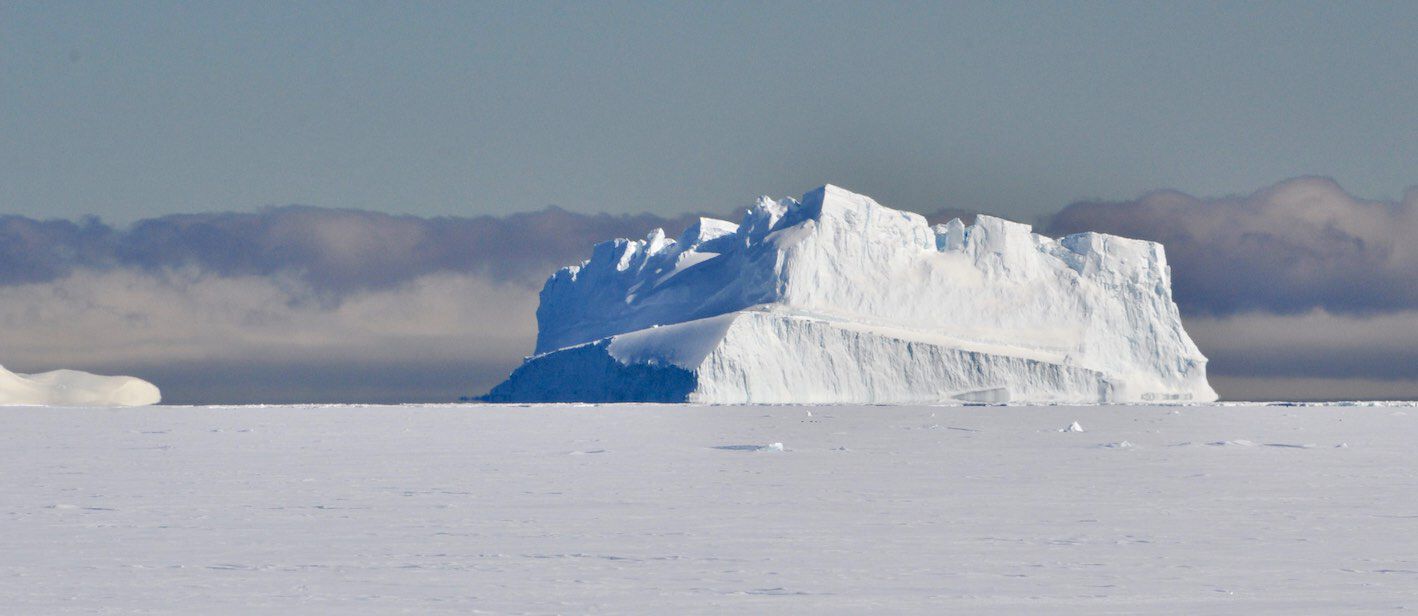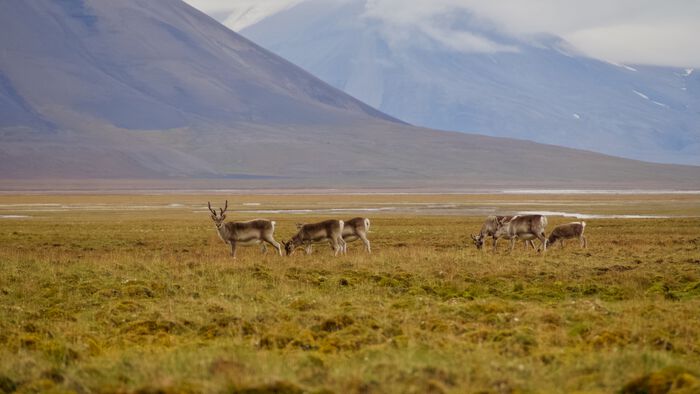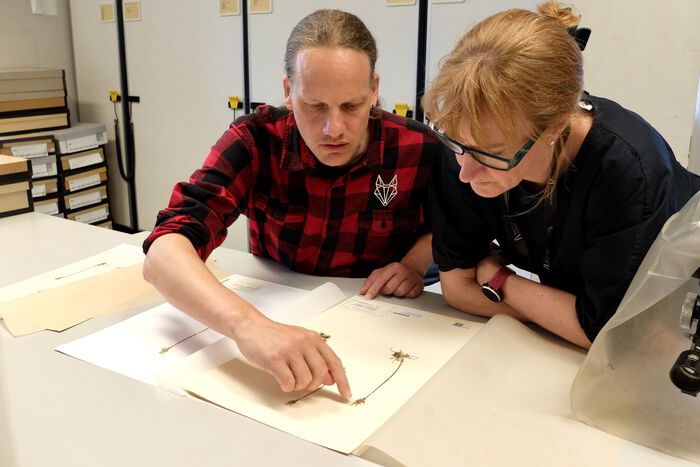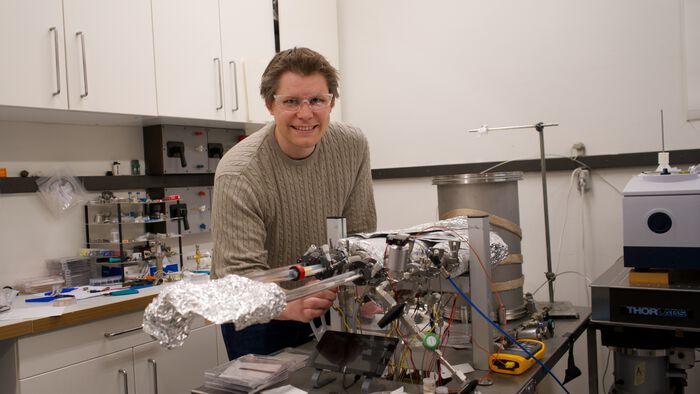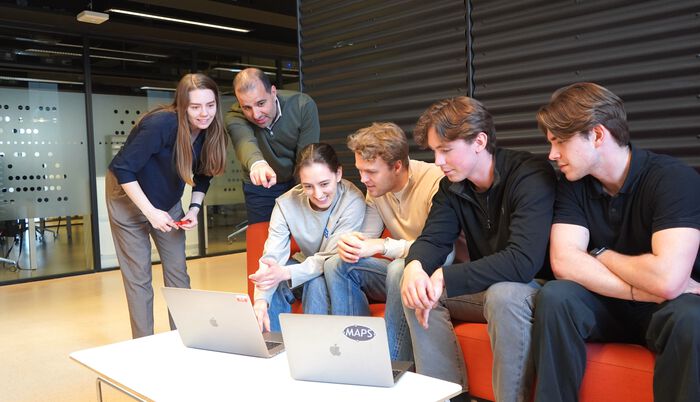4 January 2022, Shackleton Ice Shelf, Antarctica
Happy New Year!
We have met the New Year about 20 kilometers from the Mirny station. We reached the ice edge on “lille juleaften”, 23rd of December. At first, the ship tried to break the ice cover, but the ice turned out to be too thick for us to easily get through. The whole ship was shaking and trembling all the time. The ship was sliding onto the ice, then retreating, and moving forward again, now at a different angle. Each time, thick blocks of ice were breaking off, and we were moving a few meters closer to the coast. Another issue was the thick layer of fresh snow, which was acting as a pillow and made it even more difficult to crush the ice. In two days “Akedemik Fedorov” managed to create a channel about 2-kilometers long.
The ship finally stopped. The remaining distance had to be covered by a helicopter. For several days, the helicopter carried containers to the shore. We could see the station buildings from a distance (the air in Antarctica is very clean and one can see very far). We also visited the station. After 50 days on the ship, we could finally stand on a firm ground! At the Mirny station, I have installed the ionospheric instrument in the “House of Geophysicists”, where it operated for a few days. We also collected different environmental and geological samples near the station.

During our visit to Mirny, it was fantastic to discuss with scientists who overwintered here. Mirny was established in February 1956. It has been called after one of the ships of the Russian expedition, which first sighted and discovered the Antarctic continent in 1820, led by commander Fabian Gottlieb von Bellingshausen. When we visited the station, we could immediately feel the rich and often dramatic history of Antarctic scientific exploration. Here started the first “traverses” (in Russian “pohody”) - Antarctic caravans to the Vostok station. The station is surrounded by glaciers, icebergs, sea ice, small islands with large penguin colonies. On the nearby island there is a small graveyard, which reminds us about tragic moments of early days of Antarctic scientific exploration.
Upon return to the ship, we started preparations for the New Year. It has been welcomed for many hours. This is because the crew and expedition members are from nine time zones, from Vladivostok to Oslo. Traditional dinner and the speech given by the head of expedition opened the party. After midnight, I went up on the deck to take a New Year photo. The group of penguins was still sleeping next to the ship, and the sun was already rising from behind the ice cap. The icy landscape was in different shades of blue. As every day, the clouds above the ocean two kilometers behind us were dark and heavy, while the sky above the continent was almost clear.

We departed on the 1st of January, early in the morning. I woke up already at an open sea. We were surrounded by a few icebergs shining in the sun. Occasionally, whales were greeting us with fountains of water. Yesterday evening we stopped in the ice again, right next to the edge of the Shackleton Ice Shelf. Adele penguins almost immediately jumped out of the water, gathered by the aft of the ship and formed a welcome committee.
Our coordinates are 65 degrees 40,3 minutes South and 100 degrees 11,6 minutes East. We stopped as close to the Bunger Hills (the Bunger Oasis) as possible: there is only 70 kilometers left to our destination. In the coming days we will be transferred to the research station. We are almost there! We were ready to go, but Antarctica again showed us what “flexible planning” means. At night a snow blizzard started. Strong wind and snow make the helicopter flights impossible. We are waiting for better weather. And so are the penguins, which are now sleeping half-covered by snow.
Wojciech J. Miloch
Department of Physics, UiO
Professor Wojciech Miloch, at the Department of Physics, UiO, is participating in the scientific expedition to the A.B. Dobrowolski station in Bunger Hills, East Antarctica. The goal of the expedition is to revitalise the research station and restart geophysical observations in Bunger Hills. Miloch writes a blog from the journey.
The 4th PARE is organised by the Institute of Geophysics of the Polish Academy of Sciences from the funds provided by the Ministry of Science and Education of Poland. The research program of WJM is supported by the European Research Council (ERC) under the European Union’s Horizon 2020 research and innovation programme (Grant Agreement No. 866357, POLAR-4DSpace), and in part by the Research Council of Norway Grant number 267408.
The official website of the 4th PARE.
